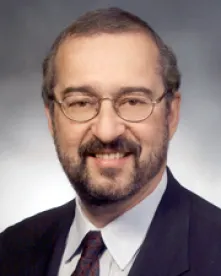In a case that has now been three times to the U.S. Court of Appeals for the Federal Circuit and once to the Supreme Court, the Federal Circuit has affirmed a district court ruling that the patent covering the diabetes drug PRANDIN® is invalid as obvious. Novo Nordisk A/S v. Caraco Pharmaceutical Labs. Ltd., Case No. 11-1223 (Fed. Cir., June 18, 2013) (Prost, J.) (Newman, J., dissenting). However, the Federal Circuit reversed the district court finding that the patent in issue was unenforceable as a consequence of inequitable conduct.
Novo Nordisk, proprietor of the PRANDIN® repaglinide product, listed the subject patent in the Orange Book for that product. (See IP Update, Vol. 15, No. 8.) The patent claim in issue simply recited treatment of Type II diabetes by administering rapaglinide in combination with another compound, metformin. Novo Nordisk asserted that the combination therapy achieved superior results than either of the drugs administered alone (monotherapy). After the district court found the claim both invalid as obvious and unenforceable due to inequitable conduct, Novo Nordisk appealed.
On appeal Novo Nordisk argued that the district court reached its conclusion of obviousness based on a prima facie case of obviousness presented by Caraco, i.e., that it was obvious to try the combination therapy of metformin and repaglinide to treat Type II diabetes since it was “well-known in the art that two drugs having different mechanisms for attacking diabetes may be more effective than one” and that drugs were often tested in combination therapy. After doing so, Novo Nordisk argued, the district court improperly put the burden on Novo Nordisk to prove the claim was not obvious.
The Federal Circuit disagreed, explaining that the district court properly applied the presumption of validity, requiring Caraco to present its evidence of invalidity in the first instance. Only after the district court found “that Caraco’s prima facie evidence, if unrebutted, would be sufficient to establish that the repaglinide/metformin combination was obvious to try, and that a person of ordinary skill in the art would have reasonably expected the combination would yield success in the form of beneficial, and even synergistic, results” did it consider whether Novo’s countervailing secondary consideration evidence of unexpected synergy (i.e., its “attempt to prove unexpected results) was sufficient to ‘overcome’ Caraco’s prima facie case.” The Federal Circuit explained that it was not until the district court evaluated “all evidence of unexpected synergy and commercial success,” that it reached its conclusion that … Caraco had shown by clear and convincing evidence that the combination was obvious.”
The Federal Circuit also disagreed with Novo Nordisk’s secondary argument that notwithstanding the district court’s allocation of evidentiary burdens, its ultimate conclusion was wrong. To the contrary, the Federal Circuit found the district court’s reasoning was spot on:
It is reasonable that an artisan seeking to combine a known insulin sensitizer (like metformin) with a new insulin secretagogue (like repaglinide) would base his expectations upon prior art sensitizer/secretagogue combinations.
Finally, the Federal Circuit found no error by the district court in declining to defer to the patent examiner’s finding on the issue of synergy:
“the initial determinations by the PTO in determining to grant the application are entitled to no deference as they would be in an appeal to this court under 28 U.S.C. § 1295(4)(A) or (absent new evidence) in a district court proceeding under 35 U.S.C. § 145. Rather, we treat the issued patent as having a presumption of validity that must be overcome by clear and convincing evidence. No decision of the Supreme Court or this court has ever suggested that there is an added burden to overcome PTO findings in district court infringement proceedings. …”
However, the panel did unanimously reverse the district court on the issue of inequitable conduct, concluding that while some of Novo Nordisk’s expert declarants statements to the PTO on the issues of unexpected results and synergy were “troubling,” they did not meet the “but for” materiality test. This is not a case where a declarant hid adverse test results from the PTO in favor of more promising data selected post hoc. Nor is this a case where the declarant’s omission expressly undermined his stated opinion.




 />i
/>i

